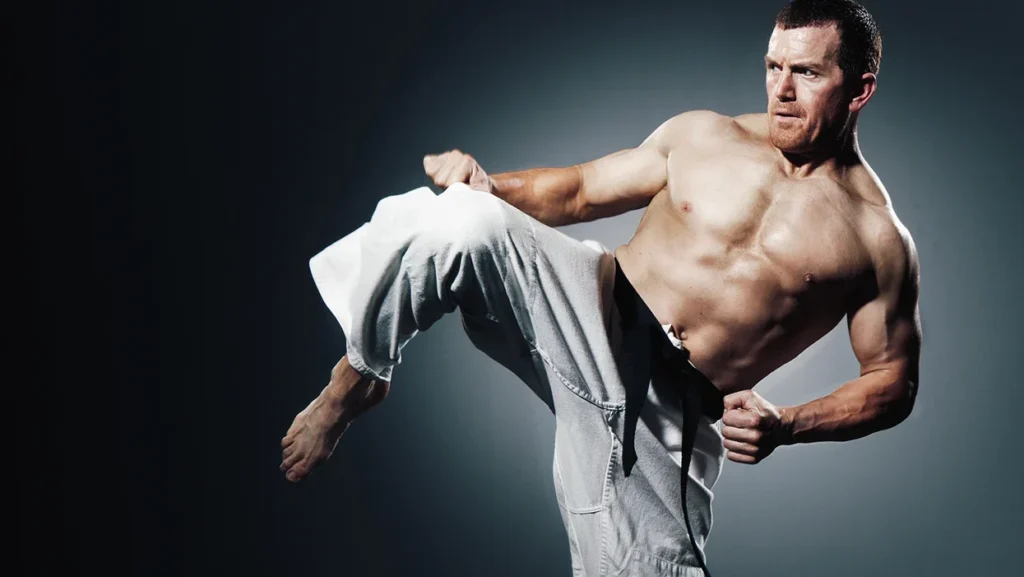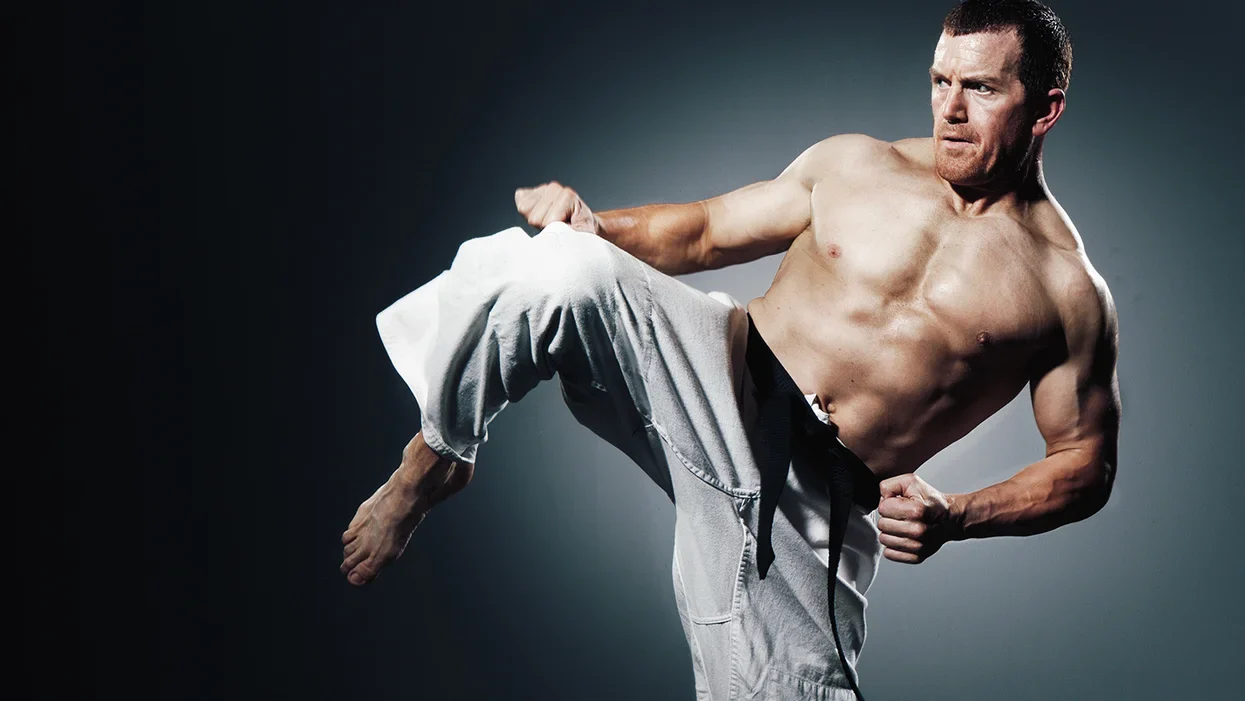Martial arts training is a journey of constant improvement, and one area that can make a significant difference in your performance is flexibility. Whether you’re a beginner or an advanced practitioner, martial arts flexibility training routines are essential for improving your range of motion, reducing the risk of injury, and enhancing your kicks, strikes, and overall technique. In this article, we’ll explore why flexibility is important in martial arts, provide effective training routines, and answer some frequently asked questions to help you get the most out of your flexibility training.
Also Read: Cycling Endurance Training Plans

Why is Flexibility Important in Martial Arts?
Flexibility plays a critical role in martial arts because it directly impacts your movement efficiency and technique execution. Here are some reasons why you should incorporate martial arts flexibility training routines into your practice:
- Improved Kicking Technique: High and powerful kicks require flexibility in your legs, hips, and lower back. A greater range of motion allows for more fluid and precise kicks, including spinning and high kicks.
- Injury Prevention: Tight muscles can lead to strains and sprains, especially during explosive movements like kicks, punches, and grappling. Flexibility training helps keep muscles long, supple, and resilient.
- Enhanced Range of Motion: Whether you’re performing a striking move, a block, or a grappling maneuver, flexibility allows for a greater range of motion, which can improve your speed and effectiveness.
- Better Balance and Agility: Flexible joints and muscles contribute to improved balance and agility, essential qualities for successful martial arts practice, particularly when evading or countering attacks.
If you want to become a better martial artist, adding flexibility training to your routine is a must. Let’s dive into some of the best martial arts flexibility training routines that will help you improve your performance.
Key Flexibility Training Techniques for Martial Artists
1. Dynamic Stretching: Warm-Up for Mobility
Before you start practicing martial arts, dynamic stretching is essential to prepare your body for movement. Unlike static stretching, which involves holding a stretch for an extended period, dynamic stretching involves controlled movements that help increase blood flow and range of motion.
Recommended Dynamic Stretches:
- Leg Swings: Swing one leg forward and backward, then side to side. This helps loosen up the hips and legs, crucial for kicking and footwork.
- Lunges with Twists: Step forward into a lunge and twist your torso toward the leading leg. This stretch targets your hips, legs, and upper body, improving flexibility and balance.
- Hip Circles: Stand tall and make circles with your hips in both directions. This exercise opens up the hip joints and enhances lower body flexibility.
Dynamic stretching helps to activate the muscles you’ll be using during your martial arts practice, making it an essential part of your martial arts flexibility training routine.
2. Static Stretching: Deepen Your Flexibility
After your martial arts session or as part of a dedicated flexibility workout, static stretching helps to deepen your range of motion by holding each stretch for a longer period (typically 20-30 seconds). This helps to lengthen muscles and improve flexibility over time.
Recommended Static Stretches:
- Standing Forward Bend: This stretch targets your hamstrings, lower back, and calves, all important for effective kicks and stances.
- Butterfly Stretch: Sit on the floor with the soles of your feet together and gently push your knees down. This stretches the inner thighs and hips, helping with your side kicks and stances.
- Pigeon Pose: A yoga-inspired stretch that targets the hips and glutes. It’s excellent for improving the flexibility needed for high kicks and deep stances.
Static stretches should be performed after your training when your muscles are warmed up to avoid injury. Incorporating static stretches into your martial arts flexibility training routines will allow you to gradually increase flexibility.

3. Yoga for Martial Arts Flexibility
Yoga is an excellent complement to martial arts flexibility training routines due to its focus on breathing, balance, and dynamic flexibility. Certain yoga poses target areas that are vital for martial artists, such as the hips, hamstrings, and shoulders.
Recommended Yoga Poses for Flexibility:
- Downward Dog: This position stretches the hamstrings, calves, and shoulders while also helping to strengthen your arms and core.
- Warrior Pose: This pose improves hip flexibility and leg strength, crucial for strong, stable stances.
- Cat-Cow Stretch: This movement improves spinal flexibility, which is important for generating power in your strikes and maintaining good posture.
By adding yoga to your martial arts flexibility training routine, you can improve flexibility while also enhancing your balance, mental focus, and endurance.
4. Partner-Assisted Stretches
In martial arts, flexibility is not just about working on your own but also about learning to work with others, especially in grappling or partner-based training. Partner-assisted stretches can be a great way to push your flexibility limits safely.
Recommended Partner Stretches:
- Hamstring Stretch: One person lies on their back while the other helps raise their leg into a stretch, focusing on the hamstring and calf.
- Partner Leg Extensions: One partner holds the other’s leg while they sit in a seated position, extending the leg. This is excellent for increasing flexibility in the quads and hamstrings.
Partner stretches should be performed with care to avoid overstretching, as they can help deepen your flexibility and range of motion.
5. Foam Rolling and Myofascial Release
Foam rolling helps to release tight muscles and improve flexibility by targeting trigger points in the muscles. This is an excellent technique to incorporate into your martial arts flexibility training routines to alleviate muscle tightness and improve mobility.
Recommended Foam Rolling Areas:
- Calves: Foam rolling your calves helps with lower leg flexibility and is especially helpful for improving your kick technique.
- Quads and Hamstrings: These muscle groups are essential for explosive movements, and foam rolling helps reduce tension and increase flexibility in the legs.
Foam rolling is a great way to complement your static and dynamic stretches and ensure that your muscles are prepared for more intense flexibility training.

Frequently Asked Questions (FAQs) About Martial Arts Flexibility Training
1. How often should I perform flexibility training for martial arts?
Ideally, you should practice flexibility training 3-4 times a week. This frequency allows you to gradually improve your flexibility without over-stretching or causing injury.
2. Can flexibility training help prevent injuries in martial arts?
Yes, flexibility training plays a crucial role in injury prevention by ensuring that muscles, tendons, and ligaments are supple and can handle the demands of martial arts movements. Stretching helps reduce muscle strain and improve joint mobility.
3. How long will it take to see improvements in my flexibility?
Improvement in flexibility depends on your starting point and how consistently you train. With regular practice, you should start to notice improvements in 4-6 weeks.
4. Should I warm up before stretching?
Yes! It’s essential to warm up your muscles with dynamic stretching before performing static stretches or engaging in martial arts. A proper warm-up increases blood flow and prepares your muscles for more intense flexibility training.
5. Can I do flexibility training every day?
While it’s possible to stretch daily, it’s important to listen to your body. If you feel any discomfort or pain, take a break and allow your muscles to recover. Stretching too often without proper rest can lead to overstretching and injury.
Conclusion
Incorporating martial arts flexibility training routines into your practice is essential for improving your performance, preventing injuries, and enhancing your technique. With dynamic stretching, static stretching, yoga, partner-assisted stretches, and foam rolling, you can build a comprehensive flexibility routine that targets all areas of the body. Remember, consistency is key, and with time, your flexibility will improve, allowing you to execute better kicks, strikes, and grappling techniques. Happy training!

1 thought on “Martial Arts Flexibility Training Routines: Unlock Your Full Potential”